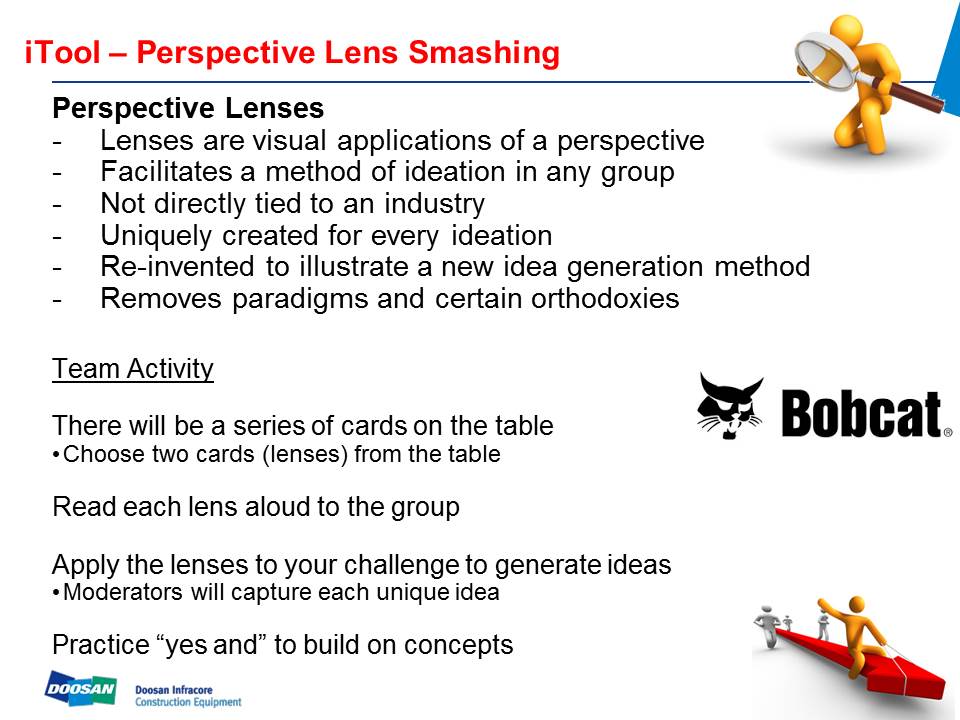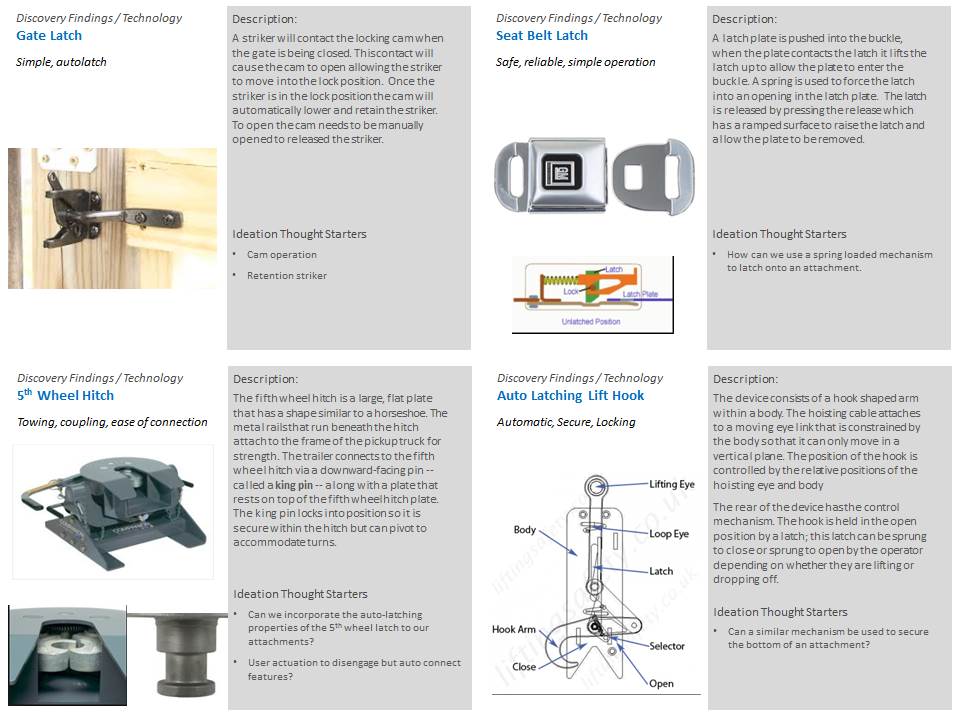If you stop and think about how you think, or if you look in the proverbial mirror and try to identify what you “see” – more than likely you are framed around what you are familiar and comfortable with. What if you took that perspective of how you think, what you think about when you frame “normal”, and blew it up? What if you had a method for accomplishing this in a way that is fun, exciting, interesting, and naturally creative?
This article is intended to introduce you to a concept that draws on an individual’s creativity by doing light idea research to frame “in” and “out of industry” discovery to gain perspective, development of lenses, and new insights from both internal and external sources. The result of discovering these lenses is something that needs to be considered in a new way. Lenses are intended to be used against each other to blend perspectives and re-discover insights on the idea or problem or challenge being innovated around.
This article was written as one of the requirements to obtain the Innovation Mentor Certification at CIMp. The CIMp program is part of ivia, the Way of Innovation(TM), founded by the University of Notre Dame, Whirlpool Corporation, and Beacon Health System. Learn more at http://innovationcertification.nd.edu/
When thinking about innovation or any method of creating ideas – I have my perspective, and I am confident that every individual has a different perspective. This perspective may be about a product, a solution, a challenge, or something similar. When talking to people at many different companies, it is very apparent that all of us have our own paradigm. Said another way – we all think differently and have our own version of what we “see.” Based on this, problem solving is difficult and many teams find themselves hitting a brick wall with nowhere to go based on these paradigms. Often, these teams turn to very expensive options like extensive prototyping and potentially 3rd party interaction. Necessary?
We look at the world through our collective “lenses”. To find a solution, the true challenge is to look at the situation in a different way – a way that is NOT comfortable.
The art of this method is to develop different lenses related to the problem and make them visual. The process is to force a visual dialogue with two different lenses simultaneously, with the goal of creating an idea about the problem or challenge statement as a result of the association of these two lenses. The trick is that each person participating cannot see the lenses before-hand, they are turned over “in the moment” to create a true innovative experience. The individual then has about 60 seconds alone with the lenses to process and generate an idea. This is called lens smashing!
The result is idea generation at a whole new level of creativity.
Ideating and brainstorming around a topic that isn’t “exciting”, is a true challenge in the world of idea generation. The most intriguing element of this process is inspiring individuals to think beyond their perspectives, and actually see the mind change. Gaining interest, interaction and participation may only really be accomplished if research and preparation are done well. If you incorporate elements that are interesting and “fun” in ways that are not normal, every person will interact in a way that is typically unpredictable. This unpredictable element is where the magic happens!
Once all of the pre-work is complete, the activity becomes real and will deliver fruitful ideas that were not initially thought as possible.
Gaining credibility is the first step. After an ice-breaker and explanation of the concept of perspectives and lenses, since not everyone will understand the perspective element, some explanation and light training will be needed up front. “Leading by example” is a powerful method that will help the participants engage in a way that isn’t uncomfortable – but quickly accepted as critical to new developments.
There are definite steps in this process for setting up success:
1- Understand the challenge or problem statement – “why” is critical.
2- Have the idea owner participate in the research element
3- Clearly communicate the intentions
4- Formulate an agenda that engages employees in several physical elements – not just sitting
5- Apply research to the lens development
6- Simulate and practice the application with the idea owner
7- Schedule and execute the event and watch the magic happen!
The original idea that I have collaborated on came from my training at Notre Dame and the Certified Innovation Mentor Program (CIMp).
Materials are dependent on the idea and/or opportunity-problem statement.






You need to register in order to submit a comment.